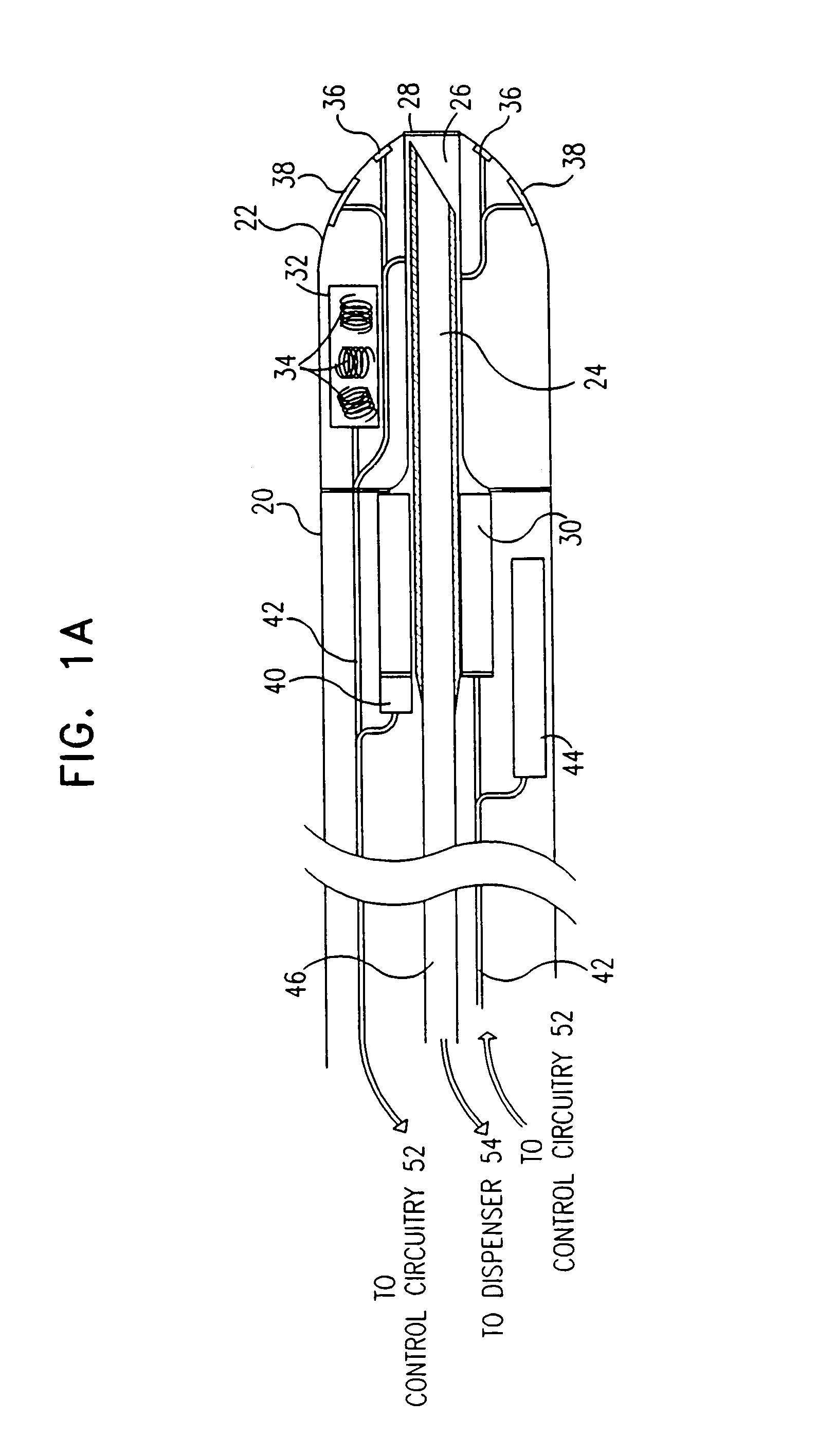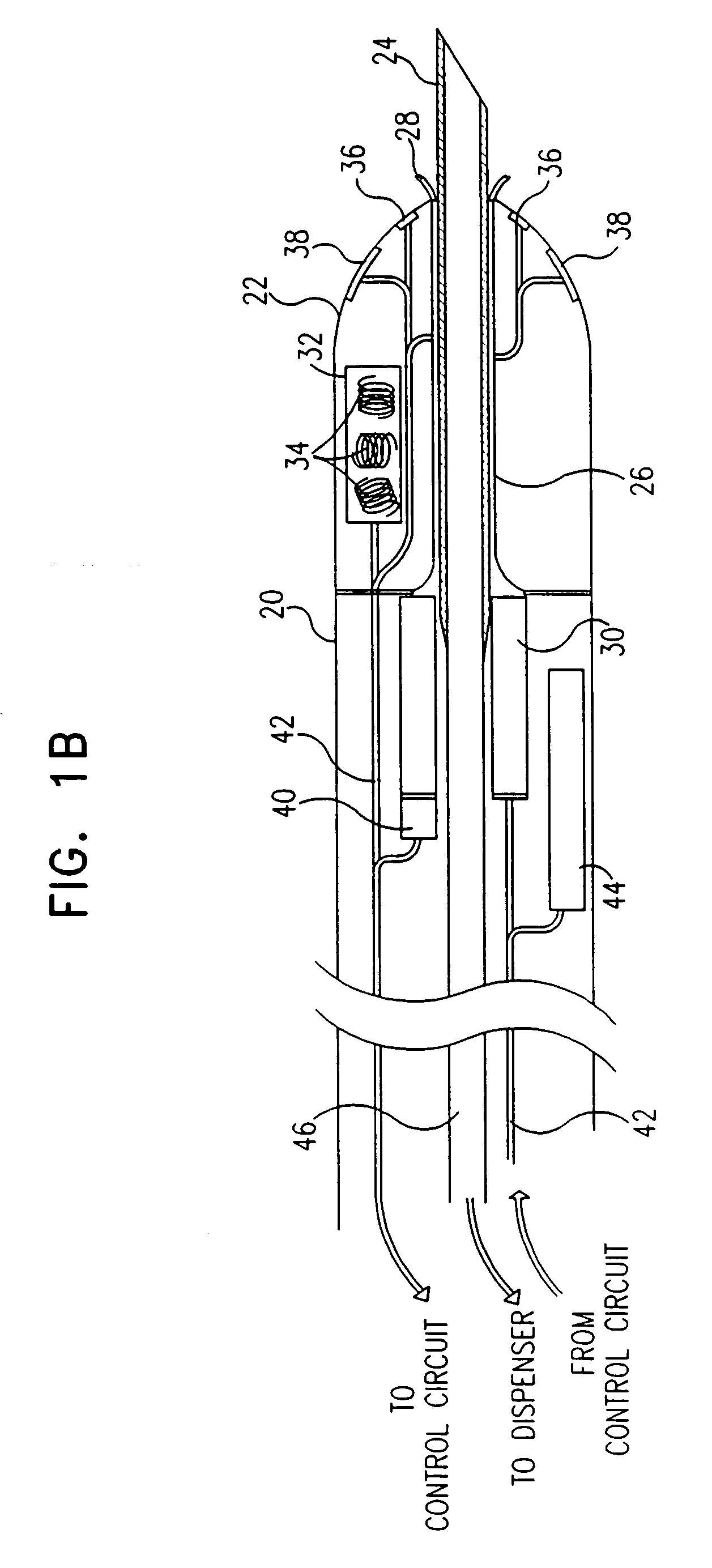Intracardiac cell delivery and cell transplantation
a cell transplantation and intracardiac technology, applied in the field of invasive cardiac treatment, can solve the problems of low retention time, minor angiogenic effect, heart disease or heart failur
- Summary
- Abstract
- Description
- Claims
- Application Information
AI Technical Summary
Benefits of technology
Problems solved by technology
Method used
Image
Examples
Embodiment Construction
[0099]Reference is now made to FIGS. 1A and 1B, which are schematic, partly sectional illustrations of a catheter 20 for minimally invasive intracardiac drug delivery, in accordance with a preferred embodiment of the present invention. Catheter 20 comprises a hollow needle 24 within the catheter's distal end 22, for injection of a drug into the myocardium. In FIG. 1A, the needle is shown in a first configuration, in which it is retracted into a sheath 26 inside catheter 20, whereas in FIG. 1B, the needle extends distally out of distal end 22, for injection of the drug.
[0100]Preferably the drug comprises a growth factor, for example VEGF or bFGF, as described hereinabove. In a preferred embodiment, the drug comprises FGF-4 or FGF-5. In another preferred embodiment, the drug comprises a gene therapy agent, such as phVEGF. Needle 24 is connected via a duct 46 to a dispenser 54 (FIG. 2) which contains the drug and dispenses it in predetermined doses through the needle.
[0101]Needle 24 pr...
PUM
 Login to View More
Login to View More Abstract
Description
Claims
Application Information
 Login to View More
Login to View More - R&D
- Intellectual Property
- Life Sciences
- Materials
- Tech Scout
- Unparalleled Data Quality
- Higher Quality Content
- 60% Fewer Hallucinations
Browse by: Latest US Patents, China's latest patents, Technical Efficacy Thesaurus, Application Domain, Technology Topic, Popular Technical Reports.
© 2025 PatSnap. All rights reserved.Legal|Privacy policy|Modern Slavery Act Transparency Statement|Sitemap|About US| Contact US: help@patsnap.com



